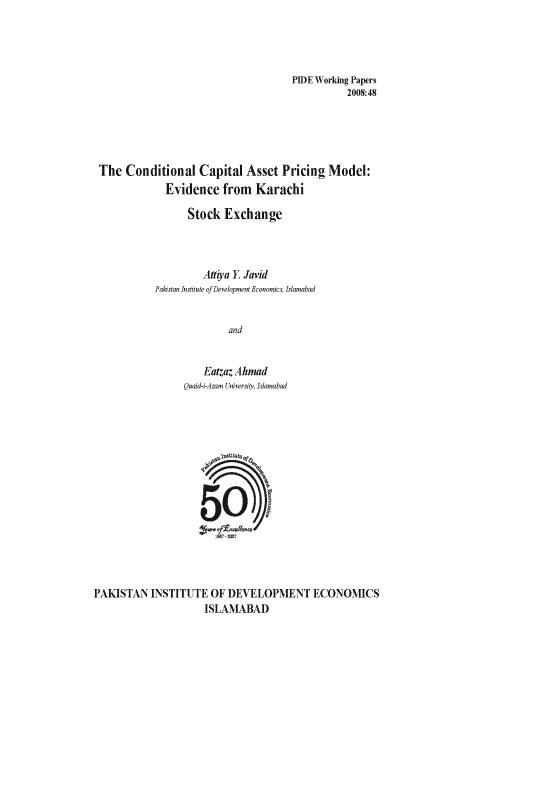
Pakistan Institute of Development Economics
- Home
Our Portals
MenuMenuMenuMenuMenuMenuMenu - ResearchMenuMenuMenuMenuMenuMenuMenu
- Discourse
- The PDR
- Our Researchers
- Academics
- Degree Verification
- Thesis Portal
- Our Portals
The Conditional Capital Asset Pricing Model: Evidence from Karachi Stock Exchange
This is an attempt to empirically investigate the risk and return relationship of individual stocks traded at Karachi Stock Exchange (KSE), the main equity market in Pakistan. The analysis is based on daily as well as monthly data of 49 companies and KSE 100 index is used as market factor covering the period from July 1993 to December 2004. The natural startingpoint of this study is to test the adequacy of the standard Capital Asset Pricing Model (CAPM) of Sharpe (1964) and Lintner (1965). The empirical findings do not support the standard CAPM model as a model to explain assets pricing in Pakistani equity market. The critical condition of CAPM—that there is a positive trade-off between risk and return—is rejected and residual risk plays some role in pricing risky assets. This allows for the return distribution to vary over time. The empirical results of the conditional CAPM, with time variation in market risk and risk premium, are more supported by the KSE data, where lagged macroeconomic variables, mostly containing business cycle information, are used for conditioning information. The information set includes the first lag of the following business cycle variables: market return, call money rate, term structure, inflation rate, foreign exchange rate, growth in industrial production, growth in real consumption, and growth in oil prices. In a nutshell, the results confirm the hypothesis that risk premium is time-varying type in Pakistani stock market and it strengthens the notion that rational asset pricing is working, although inefficiencies are also present in unconditional and conditional settings. The observation is that the dynamic size and book-to-market value coefficient explain the cross-section of expected returns in a few sub-periods. The conditional approach to testing the CAPM and the three-factor CAPM shows that the asset prices relationship is better explained by accommodating business cycle variables as information set. The findings of the conditional three-factor CAPM also give support to the fact that time-varying firm attributes have only a limited role in Pakistani market to explain the asset price behaviour.



